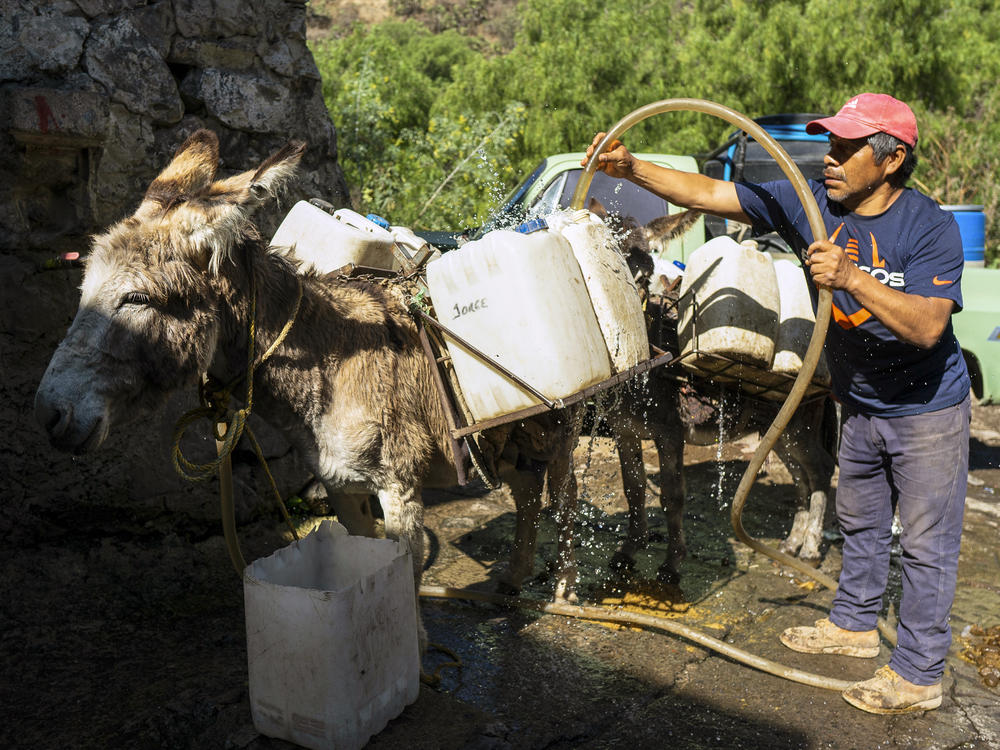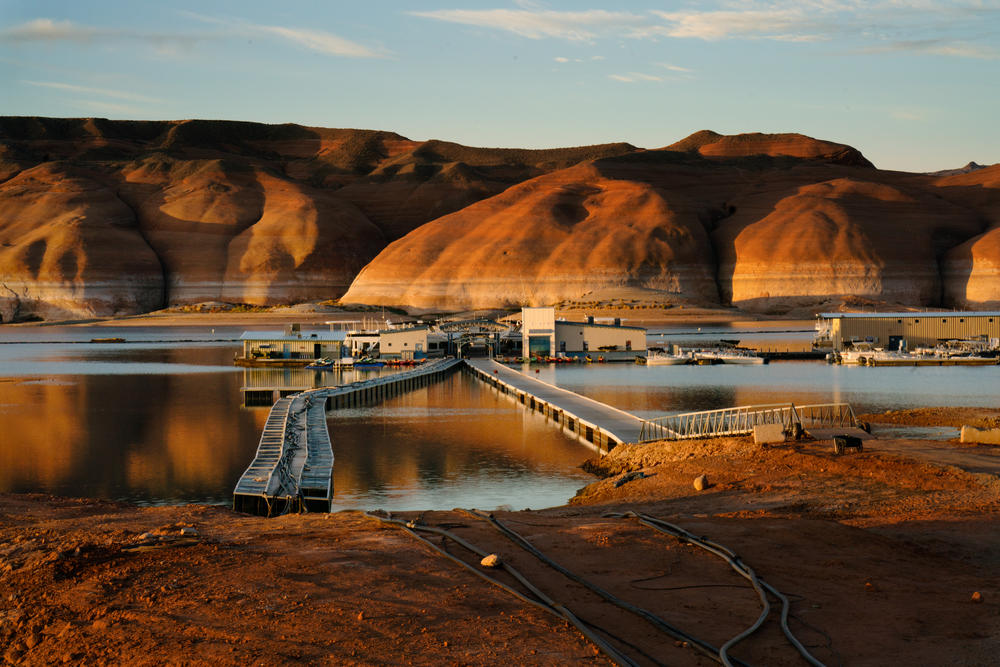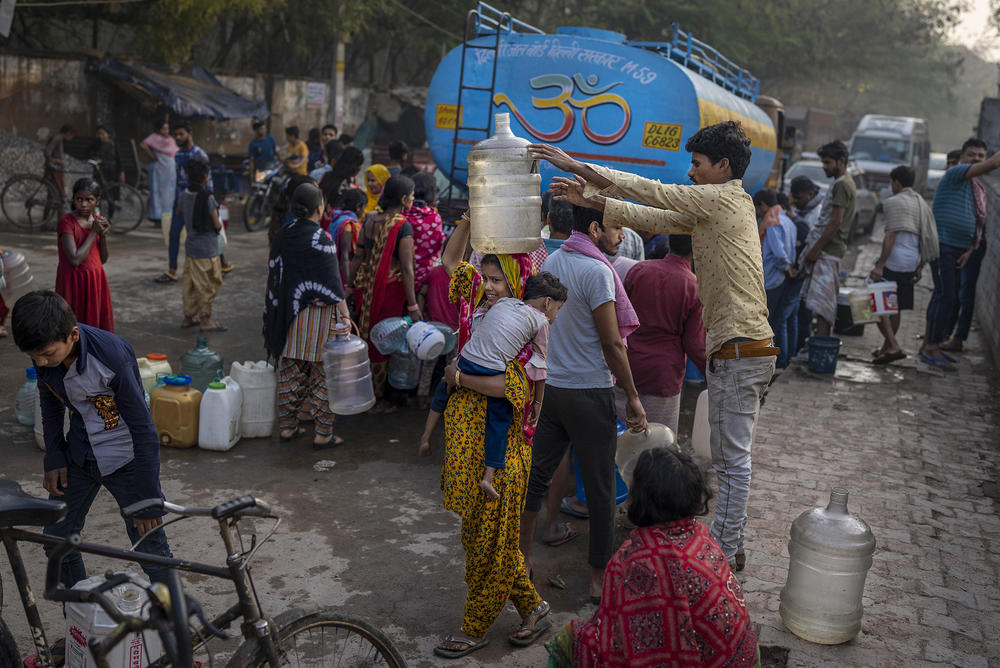Section Branding
Header Content
Billions of people lack access to clean drinking water, U.N. report finds
Primary Content
Millions of people in Mexico don't have access to clean water. Extreme heat and drought brought on by climate change are partly to blame, but so is the aging infrastructure and years of mismanaging water.
Mexico is not the only place struggling with wide-scale water insecurity. Around 2 billion people around the world do not have access to clean and safe drinking water, and approximately 3.6 billion people – 46% of the world's population – lack adequate sanitation services, according to a new United Nations World Water Development Report released Wednesday.
"Water insecurity leads to a number of other insecurities," said Richard Connor, editor-in-chief of the report. "If you don't have enough water to grow food, you will end up with food insecurity."
The new report was released Wednesday at the U.N. water conference in New York – the first major U.N. conference devoted to water since 1977. It lays out the challenges facing the U.N.'s sustainability goals to secure clean water and sanitation for all people by 2030. The U.N. estimates such efforts could exceed $1 trillion each year.
The report also warns the world is headed toward an imminent water crisis if efforts aren't made to mitigate and adapt to human-caused climate change and population growth.
"Seasonal water scarcity will increase in regions where it is currently abundant — such as Central Africa, East Asia and parts of South America — and worsen in regions where water is already in short supply, such as the Middle East and the Sahara in Africa," the report states.
Water scarcity is further complicated by the massive amounts of water needed to grow crops. Around 70% of freshwater globally goes to agriculture, and about one third of the world's cities already compete with agriculture for water, according to the U.N. report. Competition will only increase as the urban demand for water is predicted to grow by 80% within the next three decades.
Without efforts to adapt to these demographic changes and the effects of climate change, the number of people facing water scarcity in cities is expected to double to somewhere between 1.7 billion and 2.4 billion, the report finds.
"Ironically, we're talking about the same water that is needed to grow the crops to feed the cities. So there has to be a greater cooperation agreement, (an) approach, to meet both the needs of cities that are rapidly expanding in many parts of the world and the farmers," Connor said.
Responding to water insecurity
In Mexico, part of the response to water insecurity has come from the nonprofit organization Isla Urbana. The group works to help local communities that are experiencing water insecurity by installing systems in homes to capture rain that's used primarily for non-drinking water purposes.
"We started realizing what to us felt like an obvious thing, which is, you know, this city [Mexico City] that's running out of water, but that has so many millions upon millions of gallons of water falling on it every year from the sky, everywhere, should really start harvesting that water," said Enrique Lomnitz, general director and cofounder of Isla Urbana.
Since launching in 2009, Isla Urbana has installed about 33,000 rainwater harvesting systems in homes and 500 schools throughout Mexico, Lomnitz said. The group's work spans from water-insecure neighborhoods in Mexico City, like Iztapalapa in the east, to rural and Indigenous communities in the southern part of the country, where fewer people have water hook-ups.
"If the government wants to help, that's great," Lomnitz said. "But you don't need the government to catch rainwater and put it in a tank and use it... And I guess to us that just felt like a beautiful and empowering thing." Isla Urbana now does most of its work through government contracts, he explained.
Governments and partnerships are critical, according to Connor, in addressing a world facing a water crisis.
What drives water scarcity
Unprecedented population growth, development and changing consumption patterns are testing the world's water supply. Wastewater – including agricultural runoff – also contributes and is the main cause of water pollution, according to the report.
Droughts, flooding and other extreme weather events fueled by climate change are also exacerbating water shortages and quality globally.
In Kenya and Somalia, for example, prolonged drought continues to devastate crops and livestock. In the U.S., some citizens of the Navajo Nation, which spans from northern Arizona into New Mexico, don't have running water and must bring water to their homes. Meanwhile, the Colorado River, which supplies millions of people in the American West with water, is dwindling. Hurricanes and flooding are also wreaking havoc on water infrastructure and contaminating water supplies worldwide.
"How people experience climate change has a lot to do with water," Lauren Herzer Risi, program director of the Environmental Change and Security Program at the Wilson Center, said.
"Water has to sort of come out of its silo," Risi said. More than half of the global population lives in water basins that are shared with other countries, she said, and like the authors of the U.N. report, Risi stressed the importance of cooperation and management of water across country borders.
"What happens is as people sort of respond to climate pressures – whether it's building dams or otherwise – that has downstream effects," said Risi. "So if you don't have institutions in place and sort of agreements in place to manage those sorts of big changes, then that's where we see conflict."
Critical water partnerships
The U.N. report focuses on water partnerships that view water as a shared resource, such as water funds, which encourage good farming practices while also improving watersheds.
Here's how this idea works: Downstream water users, such as a city or a utility company, invest money in farmers operating upstream so they can adopt irrigation methods that require less water. High-efficient irrigation, in turn, saves water that people downstream can use.
The water fund also can be used to rehabilitate ecosystems upstream through soil conservation and to protect wetlands, which act as natural sponges to absorb and release water and filter pollutants, helping bolster water quality and availability.
Water funds have been especially popular in Latin American countries, Connor said. African and Asian countries have also adopted this idea in recent years. The Upper Tana-Nairobi Water Fund in Kenya and the Monterrey Metropolitan Water Fund in Mexico are examples of water funds that have investments from the private and public sectors.
Water funds are just one approach to help reduce the global threat to water scarcity, said Connor. Ultimately, he said governments, financiers, and investors must work together with climate and water policymakers.
The global water crisis requires a shift from seeing water as an owned commodity to one that is shared and is vital for the planet's future, Connor said.
"With increasing demand, with population growth and more vulnerable resources because of climate change, this cooperation is becoming – has always been essential – but now it's even more essential if we're going to solve any of these problems," Connor said.
Copyright 2023 NPR. To see more, visit https://www.npr.org.




